Players & Staff
- Players under contract with Rennes
Goalkeepers
- 16 Johann Carrasso
- 1 Benoit Costil
- 30 Abdoulaye Diallo
- Cheick N’Diaye
Defenders
- 4 Onyekachi Apam
- 25 John Boye
- 29 Romain Danzé
- Dimitri Foulquier
- 24 Pape Malick Kandji
- 22 Yassine Jebbour
- 15 Jean-Armel Kana-Biyik
- 5 Kader Mangane
- 3 Chris Mavinga
- 26 Kévin Théophile-Catherine
Midfielders
- 20 Yacine Brahimi
- 10 Stéphane Dalmat
- 28 Tongo Hamed Doumbia
- 8 Julien Féret
- 23 Kamal Issah
- 18 Fabien Lemoine
- 14 Georges Mandjeck
- 17 Yann M’Vila
- 26 Vincent Pajot
- Quentin Rouger
- 6 Alexander Tettey
Forwards
- 12 Razak Boukari
- 32 Abdoul Razzagui Camara
- 11 Jirès Kembo Ekoko
- 21 Víctor Hugo Montaño
- 7 Jonathan Pitroipa
- Slimane Sissoko
- 19 John Verhoek
Players on loan
- Frank Julienne (Le Havre)
Staff
- Frédéric Antonetti (Manager)
- Pierre Dréossi (General Manager)
- Jean-Marie De Zerbi (Assistant Manager)
- Christophe Revel (Goalkeepers Coach)
- Nicolas Dyon (Fitness Coach)
- Pierrick Hiard (Head of Recruitment)
- Éric Guérit (Scout)
- Marcel Campagnac (Scout)
Derniers articles de la rubrique
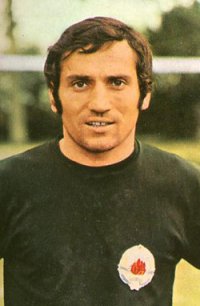
Marcel Aubour is one of the best goalkeepers in France’s football history. After becoming professional in Lyon at the beginning of the 1960’s, he played his first matches in Division 1 there in 1962, before being called with the French national team in 1964. With « les Bleus », he played in the 1966 World Cup, under the management of former Rennais Henri Guérin. During this year 1966, he left Lyon – where he won his first title, the 1964 French Cup – for Nice, returning to his region of birth, the Côte d’Azur. During the winter 1969-1970, Aubour the Provençal with his singing accent, arrived in Brittany. While Nice was trying to get rid of him, the « Red and Black » defence was put to the sword in the league, and Gérard Le Fillâtre, the current goalkeeper, conceding goal after goal. In exchange of Aubour’s transfer and a nice little sum, Le Fillâtre was loaned to Nice. The deal would not be regretted by Stade Rennes. Aubour immediately stabilized the Breton defence and was quickly adopted by the public. The next season, he triumphed in the second Coupe de France victory for Rennes. During the semi-final, he made the difference against Marseille, sickening the opposite players during the penalties shoot-out session. In final, Aubour had less work to do, but he couldn’t help making the public laugh, playing petanque with artichokes thrown on the ground. The Provençal finally left Brittany in 1972, but he had found a second home there. He signed with Reims, where he ended his professional career, at the age of 37. He then came back to Saint-Tropez, where he took over his father’s hotel and where he still lives, enjoying his retreat.
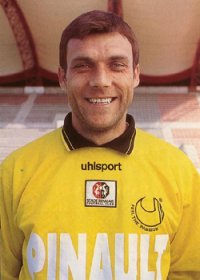
In 1995, as Stade Rennes was looking for a new goalkeeper for its professional team in order to replace Pascal Rousseau and to make up for the failed experiment with Gilles Rousset, the club chose an experienced goalkeeper, Goran Pandurović, who already had a ten years career behind him in Yugoslavian championship, where he won two national titles with Partizan Belgrade. Yugoslavian international, Pandurović played in Rennes for two seasons, before leaving his place to young keeper Tony Heurtebis 1997-1998. Aged 35 years, he then ended his career and became a goalkeepers coach. He worked back in his country of birth, especially with the national squad, before being integrated to the Partizan’s staff in 2007.
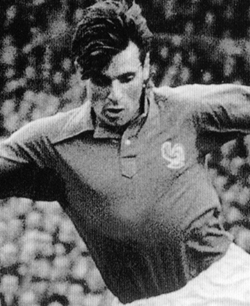
During his youth, Jean Grumellon intended himself for the sea, instead of football. A student at the naval and mechanical school of Lorient, he only debuted in football in 1937, at the age of fourteen, at his home in Saint-Servan. During the war, Grumellon took to the sea with friends. Escaping from the Vichy government, he travelled the Atlantic Ocean and joined the free French army in order to serve his country. In 1945, Grumellon returned home and took up football again. He was quickly noticed by Stade Rennes, where he signed a contract from 1st January 1947. After having played quite anonymously with an amateur team, until the time his contract was validated, he joined the first team for the 1947-1948 season. His skills as an explosive striker were obvious to all, andd Grumellon imposed himself as one of the best forwards Stade Rennes has ever known. Endowed of a relatively weak right foot, he however had an excellent kick with his left foot, which made his reputation. For his first season, even though he was positioned on the left wing, he scored no less than 31 goals! The beginning of a long collection... As seasons went by, Grumellon expressed his skills in attack and joined the French national team. With five goals in ten caps between 1949 and 1952, Grumellon realised a respectable international career, but missed the opportunity to become the hero in one the biggest achievement of « Les Bleus » history: on 3rd October 1951, at Highbury, he missed the chance to offer France its first victory against its “best enemy”, England. At the end of the match, he had two major opportunities to score the winning goal. His first shot ended on the goal-post and he kicked the ground instead of the ball in the second. Recovering fast, he was crowned the best goal scorer of the league in 1950 and therefore succeeded to German Walter Kaiser, author of the same performance a few years before with Stade Rennais. In 1952, finally, Grumellon tried a move away from his native Brittany. A two years’ experience proving inconclusive: he only spent six months in Nice, before playing with Monaco, then in D2. After having played in 1953-1954 with Le Havre, where he found his cutting-edge again, he returned to Rennes in 1954. During his absence, Stade Rennes was relegated in D2 however. Grumellon, already 31 years old (because of the war, he started his professional career only at 24), was not as brilliant as before, but still managed to score thirty goals in two seasons. In 1956, he ended his professional career in order to play in his home town, with US Saint-Malo. He also managed a sport store in Rennes, before coming back for good in the Cite Corsaire. Jean Grumellon died there at the end of 1991, at the age of 68. He remains the best goal scorer in the club’s history, with 154 goals.
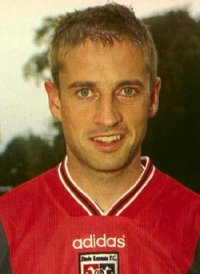
Gary Smith turned professional in Falkirk, in the Scottish second division. howeverm, he discovered the high level with Aberdeen, where he won a League Cup in 1995. In 1996, he joined Stade Rennes, who also recruited his compatriot Allan Johnston. Smith played around fifteen matches in central defence during the season, but didn’t really manage to stand out ahead of François Denis and Corneliu Papură. He then returned to Aberdeen, where he spent three seasons, before playing during seven years with Hibernians. in 2006-2007, he ended his professional career with Cowdenbeath in the Scottish third division. A last season in which he spent a few months on loan in Dundee, in second division.
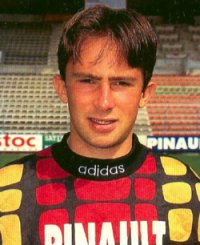
Tony Heurtebis is one of the rare goalkeepers trained by the club to have managed a successful professional career. After two seasons in the shadow of Pandurović, he was promoted to the first goalkeeper position during the 1997-1998 season. But the club’s performances weren’t good during this period, and Heurtebis faced the competition of Christophe Revault the following year. Relegated to the number 2 position, he was loaned and later definitely transferred to Troyes, where he became a full-time Ligue 1 player. He stayed in the Aube during five seasons, only the last being played in Ligue 2. At the end of his contract in the Champagne region, he joined Brest for a year and then signed for FC Nantes. With them, he started on the bench, but became a first-choice goalkeeper when the club fell in L2. After being a major part of the accession in Ligue 1, he returned on the bench once again. He quit the club as a free agent in 2010.
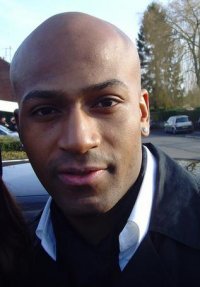
Born Mayotte, Toifilou Maoulida was trained in the south of France, in Istres and later in Montpellier. He began his professional career with the MHSC, where he scored his first goals in Division 1. In January 2002, Stade Rennais was looking for a forward and transferred him, at a time whenre many players from Montpellier joined Brittany. Despites his goods statistics in the Languedoc-Roussillon, Maoulida had difficulties to blossom in Rennes. During the 2002-2003 season he scored eight goals but only three in Ligue 1. A few months later, Stade Rennais loaned the player to Metz in order to give him a new start. It works, the mahorese forward scored a dozen of goals an came back with renewed mental strength . Back in Rennes he faced the competition of Alexander Frei, but succeeded to make his way on the wing to manage his best season in Rennes. At the end of his contract, in june 2005, he decided to join the AS Monaco. Then, Maoulida would have a lot of short experiences, before finally signing in Lens in January 2008.
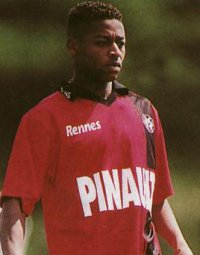
Trained at Stade Rennes’ Academy, Makhtar N'Diaye was quickly considered as one of the most promising young players at the club. His technical skills convinced Paul Le Guen to give him his first start with the first team at only 17. Unfortunately, the promising player would never really confirm at the highest level. In four seasons, he only started around forty matches as a midfielder. Insufficient for Stade Rennes, which loaned N’Diaye to Sedan for one year, but this experience did not revealed really convincing either. Since Laszlo Bölöni didn’t count on him, N’Diaye was finally released as a free agent in February 2005.
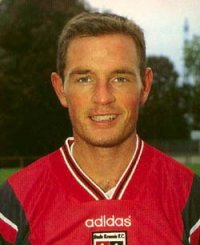
In summer 1996, Stade Rennes recruited two Scottish players. The forward Allan Johnston arrived from Heart of Midlothian, where he had started his professional career. Johnston, as his team-mate and fellow national Smith, leaved the club one year later. In the meantime, he played around twenty matches and scored two goals. He joined Sunderland in 1997, where he stood out and managed to join the Scottish selection a few months later. During seven years, he passed through many clubs of the English first and second divisions, with a one-year interlude with Glasgow Rangers, in which the club from Glasgow didn’t win any title. In 2004, he came back to Scotland for good, playing several seasons with Kilmarnock, and then with St. Mirren. In June 2010, he joined Queen of the South, a club located at Dumfries, in Scottish second division, where he became player manager in June 2011.
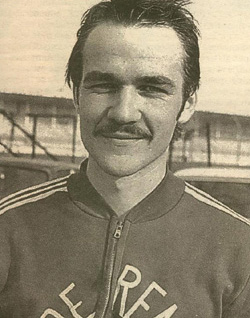
Born in Rennes, Jean-Luc Arribart went up the ranks at Stade Rennais all the way up to the first team. During his training, he also won the Gambardella Cup in 1973, one and a half year before the start of his professional career. Versatile, he then evolved equally at midfield or in defence, before settling at the position of centre back. Standing out in first team, Arribart becomes one of the main sports values of a club in the midst of economic turmoil. In 1978, to balance its budget, the Stade Rennais has no other choice but to transfer him, together with Patrick Delamontagne, to the Stade Lavallois. In Mayenne, he confirmed his status of good Division 1 player. And although he dropped to D2 during three years spent in Reims, he later returned to the top flight with Nancy. In 1988, after his final two professional years spent in Orléans then Laval, Arribart put an end to his player's career. He then became a TV consultant, a job in which he became one of the recognized actors. In parallel, between December 1999 and October 2000, he briefly occupied the position of technical director at the RC Lens.
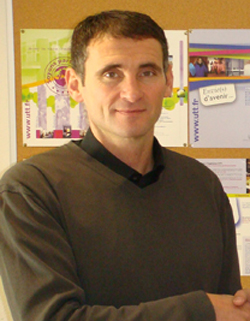
Born in Lorient but trained in Brest, Frédéric Adam had a ringside seat when the the courts ordered for the club from Finistère’s assets to be liquidated in December 1991. However this event offered him the opportunity to start with the first team in division three. Recruited as a professional trainee by Stade Rennes in 1993, Adam would take part in five games during the season 1993-1994, taking part in the promotion to Division One. Free agent in 1995, he joined Chateauroux where he contributed to the promotion of the club in first division in 1997. The end of his carrier is mainly linked to Troyes where he would become a key player of the first team both in first and second division. After two final years playing for Gueugnon, he retired in 2008 and became an advisor for ES Troyes AC’s president._
